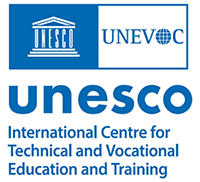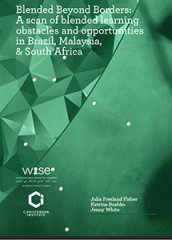
The UNESCO-UNEVOC International Centre: Who We Are | What We Do | Working With Us | Get in Touch
The UNEVOC Network: Learn About the Network | UNEVOC Network Directory
For Members: UNEVOC Centre Dashboard
Thematic Areas: Inclusion and Youth | Digital Transformation | Private Sector Engagement | SDGs and Greening TVET
Our Key Programmes & Projects: BILT: Bridging Innovation and Learning in TVET | Building TVET resilience | TVET Leadership Programme | WYSD: World Youth Skills Day
Past Activities: COVID-19 response | i-hubs project | TVET Global Forums | Virtual Conferences | YEM Knowledge Portal
Our Services & Resources: Publications | TVET Forum | TVET Country Profiles | TVETipedia Glossary | Innovative and Promising Practices | Toolkits for TVET Providers | Entrepreneurial Learning Guide
Events: Major TVET Events | UNEVOC Network News

| Author/s: | Julia Freeland Fisher, Katrina Bushko and Jenny White |
| Publisher/s: | WISE Research Clayton Christensen Institute supported by JET |
| Published: | 2017 |
| Licence: | Standard copyright - All rights reserved |
Technology has the potential to dramatically improve or positively disrupt the way students learn. In order to establish whether the integration of technology and the resulting "blended learning" approach is, in fact, resulting in instructional model change, the Clayton Christensen Institute undertook a survey study among a small sample of schools in Brazil, Malaysia and South Africa. The findings have been released in a report, “Blended beyond borders”.
JET Education Services assisted with the South African part of the study.